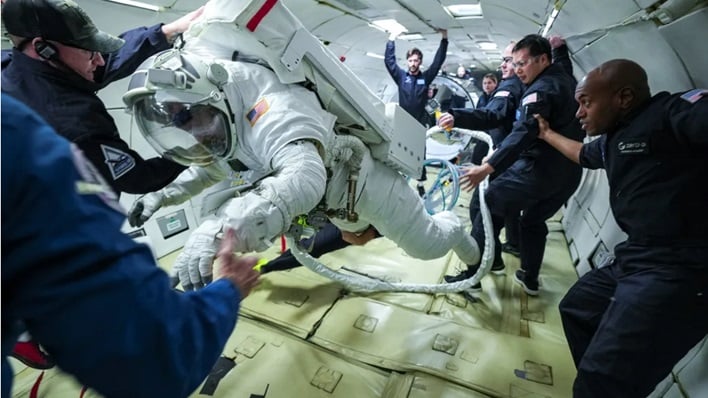NASA’s New Space Station Suit For Future Missions Just Passed A Very Important Test

NASA awarded Collins Aerospace the task of delivering a spacewalking system for potential use outside the International Space Station (ISS) in late 2022. Collins Aerospace was given an award with a base value of $97.2 million for the design and development of a next-generation spacesuit and support systems. The company joined Axiom, whic was awarded a contract to develop the next-generation spacesuit for the upcoming Artemis III mission.
“We look forward to obtaining another much-needed service under our contract,” remarked Lara Kearney, manager of the Extravehicular Activity and Human Surface Mobility Program at NASA’s Johnson Space Center in Houston. “By working with industry, NASA is able to continue its over 22-year legacy of maintaining a presence in low-Earth orbit.”
The spacesuit will replace the current space station spacesuit, technically known as the extravehicular mobility unit, which NASA says has been worn by astronauts to assemble and maintain the space station for more than two decades. The test of the new suit by Collins was conducted aboard a commercial microgravity aircraft to provide momentary periods of weightlessness. During the flight, the pilot maneuvers the aircraft in such a way to create weightless conditions for around 20 seconds at a time.
The test was part of a preliminary design review process, one of a series of “checkpoints” in the spacesuit’s design lifecycle. The test will help ensure that the design meets all system requirements before the actual manufacturing of the flight-ready suits may begin.
Future tests will comprise testing the spacesuit in a vacuum chamber, where air will be removed in order to create a vacuum to see how the spacesuit performs in a space-like environment. Other tests will be conducted at NASA’s Neutral Buoyancy Laboratory, which is a 40-foot deep pool at the Johnson Space Center in Houston. The deep pool will simulate a microgravity environment for astronaut spacewalk training.
Collins Aerospace handles the design, development, qualification, certification, and production of the next-generation spacesuits and will support equipment to meet NASA’s key requirements as the process continues to move forward.

